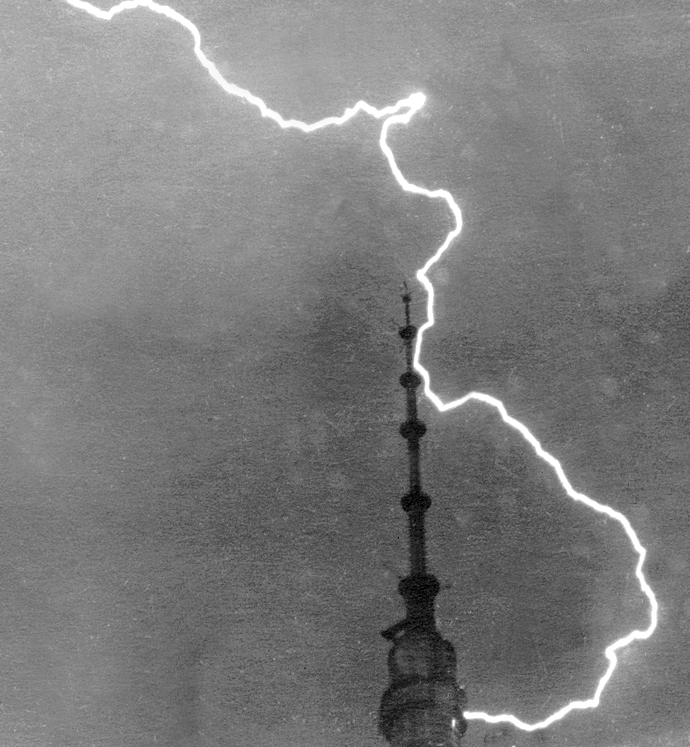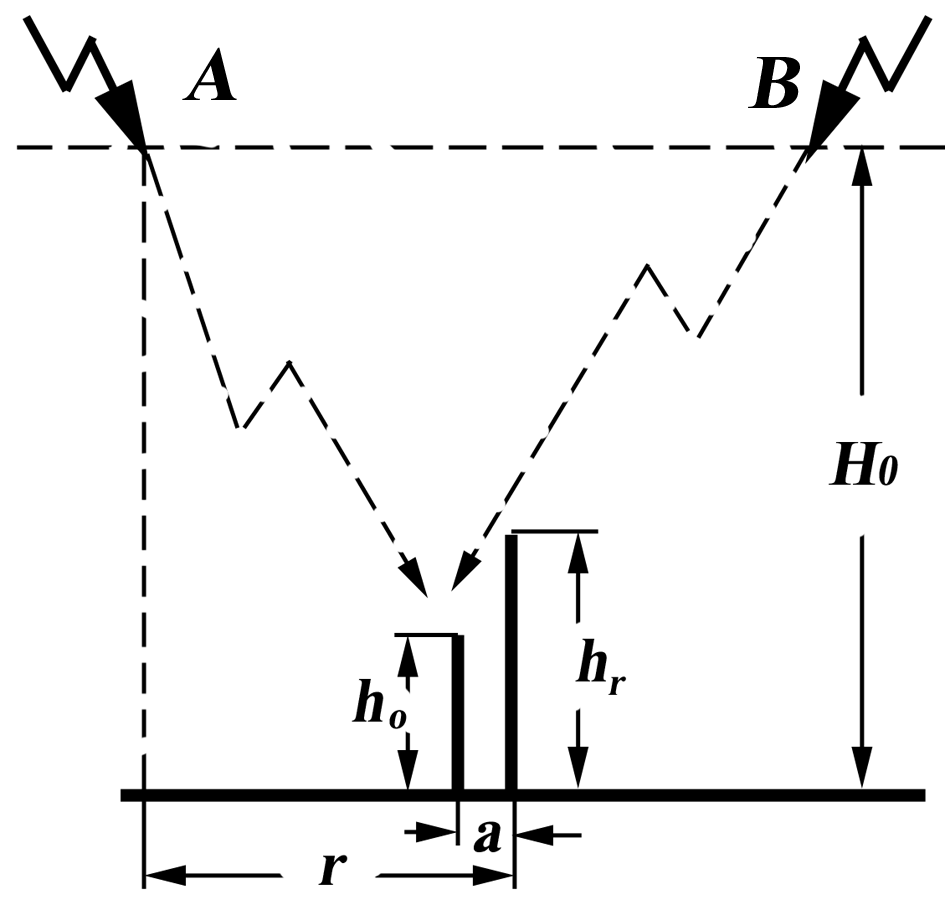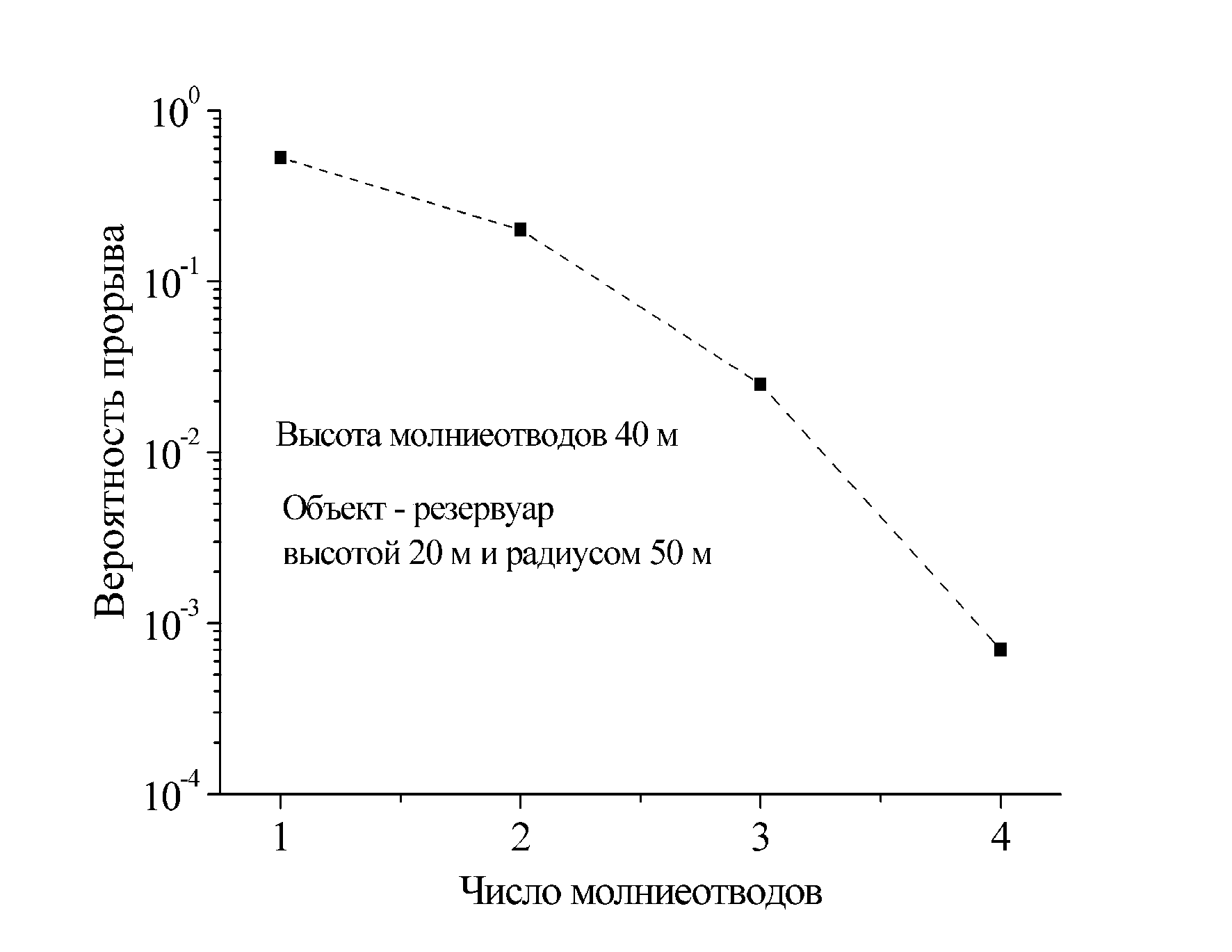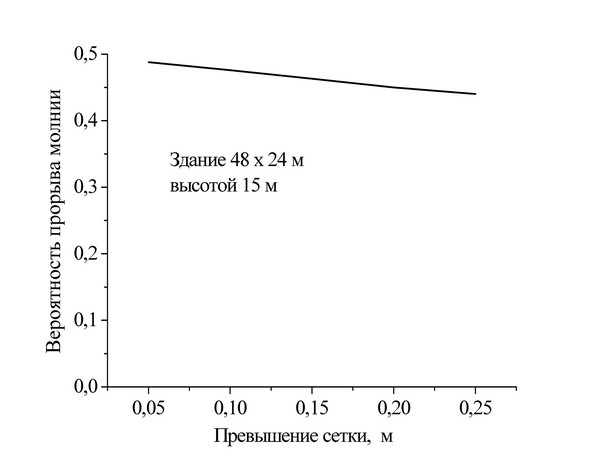From the series of articles by Eduard Meerovich Bazelyan "Everything about lightning protection zones". In these small, interconnected materials, the author reveals the origin of lightning protection zones, explains their shape and geometrical dimensions, honestly talks about the convenience of designing lightning protection by zones and is equally honest about all the troubles of such design decisions.
To illustrate the low reliability of a free-standing lightning rod, they often show this picture (Fig. 6). Lightning missed the top of the Ostankino television tower by 200 m. The highest lightning conductor in Europe meanly copes with protective functions. To some extent, this is also true for a free-standing lightning rod of any height.
Fig. 6
The reason is that at a certain position of the lightning channel, the distance from its head to the top of the object substantially approaches the distance to the top of the lightning rod. To make sure of this, it is enough to compare the situation for lightning that appeared at the height of the orientation at points A and B in Fig. 7. Elementary geometrical constructions will convincingly show that it is much more difficult to intercept a lightning from point A for a lightning arrester due to the approach of the considered distances. The action of a free-standing lightning rod turns out to be one-sided. It would be much more correct to surround the protected structure with lightning rods, thereby eliminating the azimuth dependence of the protective effect.

Fig. 7
Computer calculations in fig. 8 show how the reliability of protection of a tank with a radius of 50 m and a height of 20 m increases, with its protection by a different number of rod lightning rods 40 m high It is assumed that each of the N lightning arresters is removed from the tank by 10 m and placed with an angular step β = 2π / N.

Fig. 8
Both single and double rod lightning arresters are not able to provide even the IV level of protection against direct lightning strikes on IS-153-34.21.122-2003, while using a system of 4 lightning rods of the same height with a margin guarantees protection of the I level. It is obvious that such lightning arresters can be only designed with the help of software. Protection zones are absolutely unsuitable for this.
This is the fifth part of a series of articles "Everything about lightning protection zones". To read the material completely you need to register on the site.
Do you have questions on calculations of lightning protection or grounding? Ask ZANDZ Technical center for help!
See also:
Related Articles:




